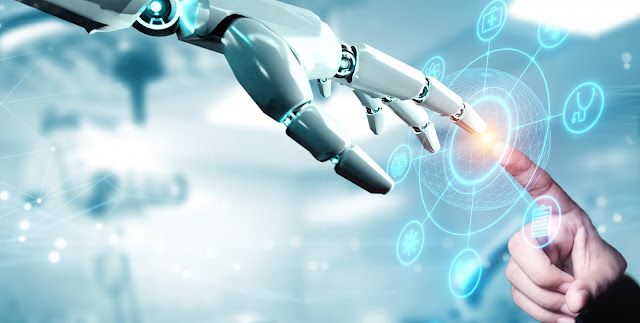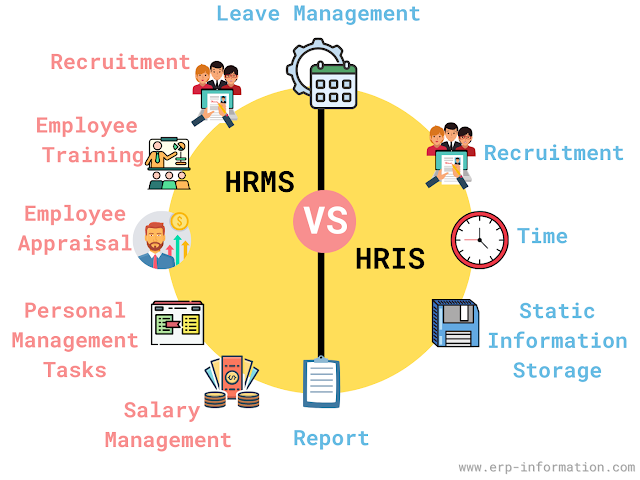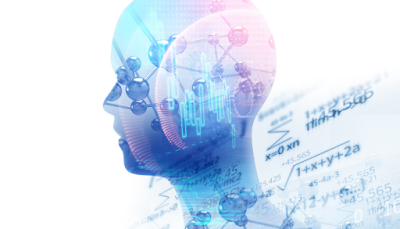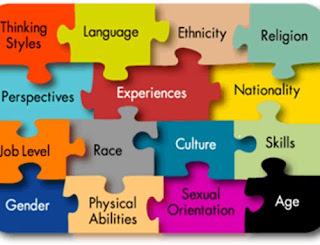The Future of HR: Harnessing the Power of AI in HR Information Systems
AI Intergration with HRIS: Is it the rise or the fall?
 |
| Figure 1: AI vs Human factor - https://nplatform.devoteam.com/expert-view/unlocking-itsm-excellence-with-generative-ai-in-the-servicenow-vancouver-release/ |
In today's fast paced and dynamic business environment, Human Resources (HR) departments are increasingly turning to technology to streamline processes, enhance decision making and improve. The employee experience. One of the key technologies revolutionizing their HR domain is artificial intelligence which, when integrated with HR Information Systems (HRIS), can unlock a wealth of opportunities for organizations to optimize HR functions and drive business success. Although it is a fascinating new territory to explore, there are many benefits, challenges and best practices to prune. Furthermore, various applications of AI in HRIS which brings varied outcomes should be analyzed. Regardless the future lies with AI and it is crucial that organizations harness the power of AI to transform their HR practices for the greater good.
What is HRIS?
HRIS stands for human resources information system. It is a software system that is used to manage an automated hr processes within an organisation.
Some related terms with. HRIS includes; Human Capital Management Software(HCM), Human Resources Management System (HRMS), Talent Management System (TMS).
These terms are often used interchangeably with HRIS and refer to systems or softwares that help organizations manage their human resources, including:
- Employee data
- Payroll management
- Administration
- Recruitment
- Performance management
- Time. And attendance tracking.
- Benefits administration
- Compliance management.
- Reporting analytics.
HRIS and HRMS are often used interchangeably but they may have some differences especially in areas like talent and performance management. HRIS focuses on using technology to enhance HR processes and improve overall organizational efficiency. On the other hand, HCM refers to a broader set of people management practices that can be achieved using HRIS and HRMS.
By leveraging HRIS Software, businesses can make data driven decisions, enhance user experiences, reduce labor intensive tasks, accommodate business growth, maintain compliance and ultimately improve workforce productivity.
 |
| Figure 2: ERP, (2023), HRIS vs. HRMS, What is HRIS? (Best Human Resource Information Systems) (erp-information.com) |
Some Examples of HRIS Systems in use today:
- ADP Workforce Now®
Designed for mid-sized businesses, ADP Workforce Now provides an all-in-one platform to manage payroll, talent, benefits, time, people, analytics and more.
- ADP Vantage HCM®
Large, multinational companies based in the United States can manage their workforces and make strategic decisions on key growth drivers, like labor costs and turnover, with the aid of ADP Vantage HCM®.
- ADP Next Gen HCM
Businesses that are expanding can rely on ADP Next Gen HCM to help them adapt to rapidly changing environments and people requirements.
(ADP,2024,What is HRIS? | Human Resource Information System | ADP)
Benefits of AI in HR Information Systems
1. Enhanced recruitment and talent acquisition:
AI powered tool can automate resume screening identified. top candidates and improve the efficiency of the hiring process.
2. Personalized employee onboarding and training:
AI can provide tailored training materials resources. and guidance to new hires, improving the on boarding experience.
3. Improved performance management:
AI can analyze performance data offer insights on employee performance trends facilitate continuous feedback and development planning.
4. Enhanced employee engagement and retention:
AI can analyze employee feedback, predict turnover risk and provide recommendations for increasing employee retention.
5. Advanced HR analytics and reporting:
AI can provide advanced analytics. predictive modelling and data visualization tools to support data driven decision making in HR.
Will AI shape the future of HR? Or will it lead to its decline?
Whilst the integration of AI in HRIS offers numerous benefits, organizations must also be mindful of potential challenges and considerations. It is essential for organizations to establish clear guidelines, policies and training programs to ensure responsible and ethical use of ai in hour systems.
Negative impacts of AI use in HRM:
 |
| Figure 3: AI judgment in HR? https://indiaemployerforum.org/2021/05/13/ai-bias-in-hr-will-ai-ever-produce-100-ethical-results/ |
1. Bias in decision making:
While AI has made all of our lives much more. easier, It still does not possess the human factor. algorithms can inherit biases present in the data used to train them, Leading to discriminatory outcomes in areas such as recruitment, performance evaluations, Appraisals. and promotions.
2. Privacy concerns:
AI systems may collect and analyze sensitive employee data, raising privacy issues and concerns about how this information is used and protected.
3. Job displacement:
Automation driven by AI could lead to job losses or changes in job roles, potentially causing anxiety and uncertainty among employees.
4. Lack of human touch:
AI driven hour processes may lack the humane factor and empathy needed for certain interactions such as employee counselling or conflict resolution. As well as, in specific cases during crucial decision makings such as layoffs, redundancies, salary alignments.
5. Over reliance on technology:
Depending too heavily on AI for HR functions may lead to decrease in human oversight and decision making, potentially resulting in errors or misunderstandings.
6. Resistance to change:
Employees or HR professionals may resist adapting to AI technology due to fear of job loss, lack of understanding or concerns about job security.
7. Cost and implementation challenges:
Implementing AI in HR can be costly and time consuming, requiring significant investment in technology, training and infrastructure.
Best practices for leveraging AI in HRIS
 |
| Figure 4: Monitor AI results regularly,https://dlabs.ai/blog/5-key-reasons-why-you-should-use-ai-based-solutions-in-your-hr-department/ |
Define clear objectives use cases and success metrics for integrating AI in HRIS to align technology initiatives with business goals.
2. Invest in data quality and governance:
Ensure data accuracy consistency and security to enable ai algorithms to generate reliable insights and recommendations.
3. Foster a culture of innovation:
Encourage experimentation, collaboration and continuous learning to drive adoption of AI technologies within the HR function.
4. Monitor and evaluate performance:
Regularly monitor the performance of AI powered HRIS solutions. Gather feedback from users and make adjustments to optimize system performance and user experience.
Conclusion:
As Organizations continue to navigate the evolving area of HR Technology, the integration of AI in HR information systems presents a transformative opportunity to drive efficiency, enhanced decision making and improve the employee experiences. By leveraging the power of AI in HRIS strategically and responsibly, organizations can unlock new possibilities for optimizing hour functions. However, it should never be forgotten that the human factor can never be replaced and HRM should always have the human touch intact to serve its biggest asset; its' employees.
References:
1. https://www.adp.com/resources/articles-and-insights/articles/w/what-is-hris.aspx,(Online)-Accessed 15-04-2024
2. Bersin, J. (2018). AI in HR: A Primer. Deloitte. https://www2.deloitte.com/us/en/insights/focus/human-capital-trends/2018/artificial-intelligence-hr-technology.html
3. Society for Human Resource Management (SHRM). (2021). Artificial Intelligence in HR: What HR Professionals Need to Know. https://www.shrm.org/resourcesandtools/hr-topics/technology/pages/artificial-intelligence-in-hr.aspx
4. ADP, (2024)https://www.adp.com/resources/articles-and-insights/articles/w/what-is-hris.aspx
5. ERP (2023), What is HRIS? (Best Human Resource Information Systems), https://www.erp-information.com/hris-human-resources-information-systems



One of main trend is AI which explains well. How is it important to seccess the organization.
ReplyDeleteThis blog post provides a thorough exploration of the integration of AI in HR Information Systems (HRIS), offering insights into its benefits, challenges, and best practices. By addressing the potential impacts of AI on HR functions, such as recruitment, talent management, and employee engagement, the post effectively highlights the transformative potential of this technology in reshaping the future of HR. Additionally, the emphasis on responsible and ethical AI use, alongside the importance of maintaining a human touch in HR practices, reflects a nuanced understanding of the complexities involved in leveraging AI in HRIS.
ReplyDeleteThe comprehensive breakdown of HRIS and its related terms provides valuable context, while the exploration of AI applications in recruitment, onboarding, performance management, and more offers a glimpse into the future of HR.
ReplyDeletewell organized and most areas covered about AI in HRIS.
ReplyDeletewell explained
ReplyDeletewell explained
ReplyDeleteThis post explores the integration of AI with HRIS, highlighting its potential benefits and challenges. While AI streamlines HR processes and enhances decision-making, it also raises concerns like bias and job displacement. It stresses responsible AI use, emphasizing clear guidelines, data governance, and ongoing monitoring. Overall, it suggests a balance of AI and human involvement for sustainable success in HR practices.
ReplyDeleteThe future of HR lies in harnessing the power of AI within HR information systems. AI can streamline recruitment, optimize employee engagement, and provide data-driven insights for strategic decision-making. Its integration promises efficiency, personalization, and agility in managing human resources.
ReplyDelete